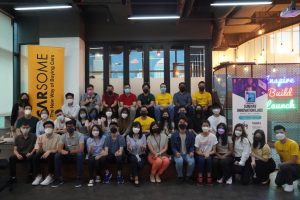The Digitalisation Play: Expectations vs. Reality

Written by Dr. Beh Ching Yew
The new normal arising from the global pandemic will entail a paradigm shift in our ways of living. Digitalisation is amongst the inevitable and requires us to embrace and adopt next-generation technologies to propel forward. While we expect the setting in of digital transformation would be seamless and spurs growth momentarily, however, this is not without teething problems in reality.
I recall from a previous project we did with a team of researchers from our university to look into feasible process optimisation for a local manufacturing company. At the beginning of the work, our research team members were arduously finding needles in a haystack of information for a good couple of weeks. They realised that they had little choices but to begin gathering patches of data from different workstations at the production site, documented manually by employees. After several weeks of hard work without leaving any stones unturned, they were relieved to found unbiased datasets to work with.
Our research team recorded and stored the data systematically in database and made them into useful parameters for a process optimisation calculation tool, which provide insightful gauge of the operations and overall productivity for the manufacturing plant. Recommendations were made by our research team and the company was excited to envision the potentials of growth that these might bring. The company had improved control of its production lines and timely managed supply of products to its customers.
There were important lessons learnt from the project above. Digitalisation is overly said than done. We often forget that the casts, stage, storyline, props and others, that make up the digitalisation play has to be in synchronisation to deliver the end goals in reality. In the case of the project above, the casts, i.e. employees of the manufacturing company were not digitally prepared and trained to operate; the stage, i.e. manufacturing plant could have been set up in intelligent formation to allow smarter operations; and the props, i.e. equipment, accessories and tools coupled with appropriate automation could be added to reduce human bias in precision; the storyline, i.e. standardisation of manufacturing processes to ensure consistency and accuracy across all products made.
When embarking on the digitalisation agenda, we must first understand and identify the preparedness of all components such as processes and structures, people and skills, and cultures and mindset. Technology and infrastructures are important but not the essential components. In my view, one essential component that is worth our attention is the people and mindset shift as this would be a determining factor and barrier to adoption and success in digitalisation efforts.
According to the concept of absorptive capacity in organisational behaviour, companies who constantly develop knowledge, skills and ideas build the capacity to produce dynamic capabilities. A baby cannot run before he/she learns how to walk. In the same way, a company does not become digital by buying or using new technology; it has to continuously build people asset with right capabilities, knowledge and mindset over time. While companies need to address this reality seriously, there is no one smooth sailing transformation journey. Digitalisation is here to stay so companies and employees should consider treating it as a long-term investment.
Let’s be ready, set and grow!




